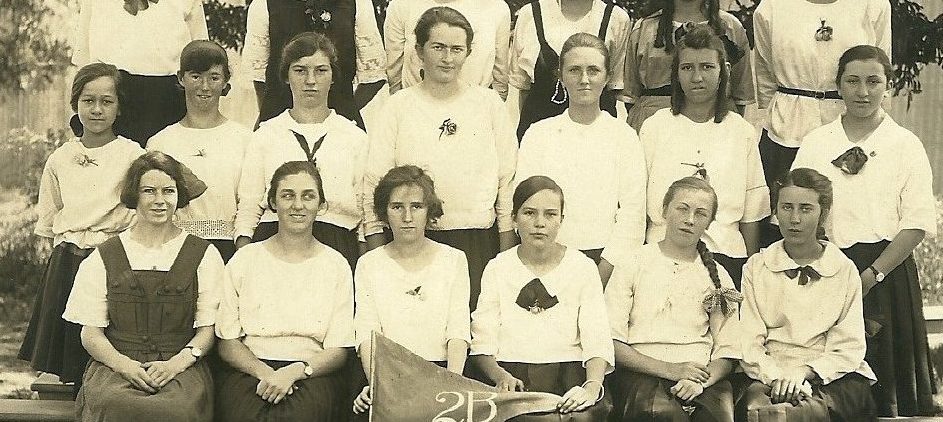Pauline Curby, author of Independent Minds: a history of St George Girls High School (UNSW Press, Sydney, 2016) talks about the importance of writing the history of public schools…
St George Girls High School opened at a critical juncture in the history of Australia. The year 1916 was a troubled time, with political unrest, and war in Europe – a time when ‘enemy aliens’ such as the German-born school caretaker were locked up, supposedly for the public good. In this unsettled atmosphere, on 31 January 1916, principal Emily Cruise led her students into a former residence called Harrow Villa to begin a new phase of their education.
Another influence in 1916 was the expansion of secondary education in NSW– probably as dramatic a change as would occur later in the 1960s. The historic old school in Regent St, Kogarah – where Kogarah High School now is – was bursting at the seams in 1915 with a primary school and boys’ and girls’ secondary classes all operating on one site. So the Department of Public Instruction, as it was then called, decided to build a school for the girls and boys of St George and surrounding districts. Because co-education was not the norm in NSW schools, it was later determined the new school would cater for girls only and so St George Girls High School was established.
Independent Minds is an examination of the merits and the shortcomings of a single-sex, selective school told in the context of the evolution of public education. It traces the impact of limited educational and career prospects for many of the students during its first 50 years and examines how expectations and opportunities have expanded, particularly since the 1960s. One of the overarching themes is girls’ education generally and in particular the education of high achieving, talented students.
At the Professional Historians Association conference in Melbourne in August several historians mentioned school history projects they were working on, but I think I was the only one writing about a public school. Why? Because it’s usually only well-endowed private schools that can afford to commission a professional history. St George Girls High School has managed to do this through careful budgeting and parents’ willingness to contribute voluntarily to the school.
In October 2016 a Sydney Morning Herald article listed a number of public schools in NSW – St George was not on the list – with substantial funds, by public school standards. It was suggested that these ‘affluent’ establishments should share their resources with less fortunate schools. It would be even better if wealthy private schools shared some of the generous taxpayers’ grants they receive with needy schools.
David Gonski recently noted that just because he and others like him are prepared to contribute to a fund for public schools, does not let the government off the hook. Governments – state and federal – have a moral obligation to fund adequately the schools that educate all – no matter what their colour, creed, sexuality or economic status.
As a former St George principal Carole Knott commented, ‘if we don’t celebrate the excellence that is public education then everybody assumes it’s second-rate and it’s not.’ Independent Minds demonstrates the many triumphs of public education – a system which allows a person from any background to achieve their potential.
Picture: Class 2B, St George Girls High 1922. (Courtesy of Beverley Earnshaw)

Well said Paulin!. Many public schools have produced notable and great contributors to society over so many decades many of whom were from the less privileged echelons financially. It would be good to spread the news. Public schools advantaged them and they in turn have benefitted all as a result of their education.
Good to have a history of changes in girl’s education and the changes in the public system. Congratulations to the school on funding it – may there be more such studies!